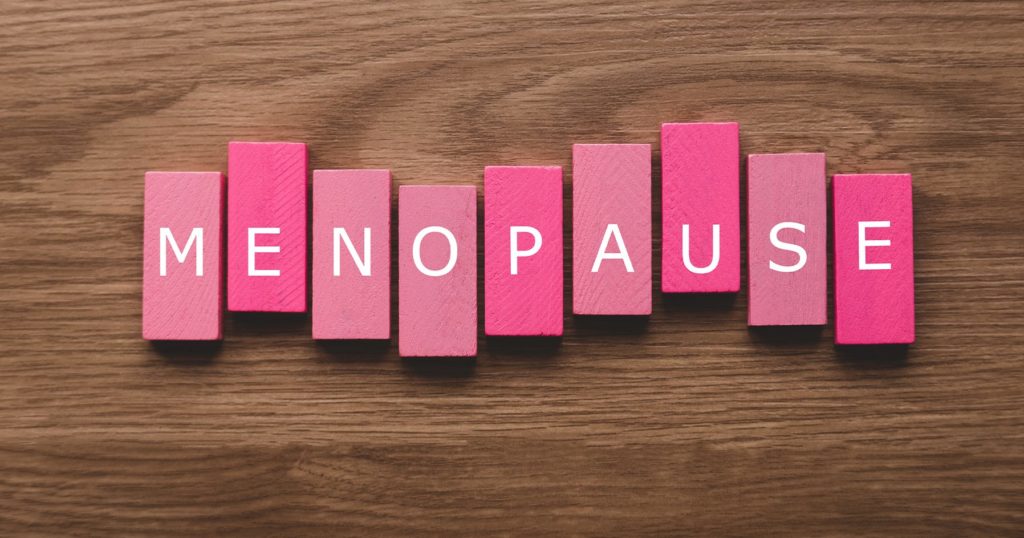
What is the menopause and how do we usually treat it?
The decline in ovarian function and alterations in hormone levels known as the menopause, is a natural part of the female aging process and marks the end of reproductive capability, as the ovarian hormone levels and menstrual period cease. Whilst menopause is a normal event, and most women do not seek medical intervention, around 25% will experience problematic symptoms which impair their quality of life and require treatment. Common symptoms include hot flushes, night sweats, vaginal dryness and dyspareunia and mood or sleep disturbances. There are also long-term issues such as reduction in bone density, and an increased risk of cardiovascular disease. Vasomotor symptoms such as hot flushes are the primary reason women seek treatment for the menopause and whilst hormonal therapies, aiming to restore the levels of hormones that are declining temporarily, can be effective, for some women it is unsuitable for example if they have a background of certain oestrogen-associated cancers or due to personal preferences. (1)
It is important that treatment for the menopause is individualised and takes into account the patient’s beliefs and socio-cultural perceptions as well as their preferences.
What are non-hormonal therapies?
For women who are averse to or in whom hormonal therapies are contraindicated you can consider non-hormonal treatments. These act fairly quickly so if there is no improvement seen within a few weeks it is important to consider a different approach. (1) There are a wide range of non-hormonal and alternative treatments available but it is important to be aware of misinformation surrounding these, and important to consult with a doctor before following any such advice. There is clinical evidence for the efficacy of isoflavones and red clover, containing phytoestrogens, after studies showed a lower rate of symptoms in populations which consumed more of these such as the Japanese. Psychological therapies such as cognitive behavioural therapy and clinical hypnosis have also been shown to be effective in treatment of the menopause, since it requires a holistic approach in its management, accounting for the mental health aspect of the symptoms. Options like acupuncture however, have been demonstrated to have limited efficacy and therefore should not be used. (2)
There is also evidence for the use of psychiatric and neurological medications such as SSRI/SNRIs, gabapentinoids, and clonidine for the treatment of symptoms associated with the menopause and similarly to CBT this may be due to the psychological impact of menopause and its symptoms on patients, as well as improving mood and sleep generally. Options such as vaginal laser treatment, which are not commonly offered, can produce rapid and effective improvements in the symptoms, lasting approximately 12 months however the benefits are very localised and will not treat any associated symptoms. (2)
What novel therapies are being trialled?
Recent research looking into the pathophysiology of hot flushes has identified a chemical pathway involving neurokinin B/neurokinin-3-receptor (NKB/NK3R) as being involved through interacting with areas in the brain which control body temperature and sensations. Neurokinin B binds to the receptor to stimulate its effects. It has been shown that a deficiency of oestrogen increases neurokinin B overstimulating this pathway and therefore agents which antagonise the receptor could suppress the pathway and reduce vasomotor symptoms. A number of these have been trialled in placebo-controlled blinded randomised controlled trials which have shown promising results and been shown to significantly reduce frequency of hot flushes, improve sleep, mood and quality of life with no safety concerns. Though further studies are underway, this is an exciting prospect for future management of patients particularly for whom hormonal therapies are contraindicated.
References
1 – Hickey M, Szabo R A, Hunter M S. Non-hormonal treatments for menopausal symptoms BMJ 2017; 359 :j5101 doi:10.1136/bmj.j5101
2 – Djapardy V, Panay N. Alternative and non-hormonal treatments to symptoms of menopause. Best Pract Res Clin Obstet Gynaecol. 2022 May;81:45-60. doi: 10.1016/j.bpobgyn.2021.09.012. Epub 2021 Nov 17. PMID: 34952794.
3 – office, BMS. “New Non-Hormonal Treatment For Hot Flushes – British Menopause Society”. British Menopause Society, 2020, https://thebms.org.uk/2020/07/new-non-hormonal-treatment-for-hot-flushes/. Accessed 19 Dec 2022.
